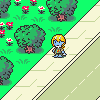Sign In
CloseWhat constitutes a good commission policy? by ramzyuu
As an artist it's important to craft a solid terms of service that protects you from abuse and satisfies your customers.
Policies to address:
* Policy TOS: Should be publicly displayed, clearly and carefully written, and provided to the customer to review and agree on before work has begun.
Make sure there are no unpleasant surprises in store for both parties.
* Payments: In most cases payments should be done ahead of time, either in full or half now, half on delivery.
An artist's reputation is on the line here; those who take payments but don't deliver stand to lose more than individual customers who take the art but don't pay up.
It's easier to make multiple identities and keep a low profile after stiffing an artist than it is to display and sell art in the same way.
Plus there are many more customers out there than artists, so documenting and reporting abusive customer incidents is much more difficult than the reverse.
* Edit policy: [By default] the artist has an obligation to make their best effort to correctly draw the character, and have a professional and courteous attitude about fixing the errors.
Note that this does not account for differences in style, nor should style be used as an excuse for making mistakes and refusing to fix them.
If you're one of those artists who deeply detests ever working on an image after it's "done", then you should make this very clear in your policy and make sure the customer understands and accepts it.
That said, there should be a reasonable limit on how many rounds of edits can be made to protect the artist from abuse.
* Posting: The artist should make sure the customer is OK with them posting the finished image, and have a policy in place if they don't want it posted (probably an extra fee depending on value).
Most artists prefer to post the art for various reasons and most customers are OK with it, but this shouldn't be automatically assumed.
* Tracking commissions: Artists should diligently keep a record of all their commissions in a single document (Excel, Google Docs or even a pad of paper)
Also keep track of the dates and be sure no one is left twisting in the wind.
I'm always flabbergasted when I see artists post journals asking for anyone who commissioned them to contact them... you really need to keep track of this stuff.
* Communication: This goes both ways. Both parties need to respond to each other within a reasonable time frame, even if there is no news.
* Satisfaction guarantees: It's a sign of good service to have these, but make sure it isn't ripe for abuse. Full refunds for dissatisfied customers might be fertile grounds for "free" commissions.
Work out a reasonable refund percentage, probably somewhere in the 25-50% range, and carefully vet the claims made. Cancel the policy if you suspect it's being abused.
* Refunds: This fandom shouldn't be used like an interest-free bank. Always be prepared to issue refunds at a moment's notice to all your customers if need be.
If you are unable to do so, perhaps FA isn't where you should be looking for emergency funds...
* Timeframe: The artist should be very clear about how long it will take and strive to deliver by that date. There should also be a policy for what happens if the artist is late on delivery.
These are my views, from my experience on both sides of the aisle. What are your opinions on good service for commissions?
Journal Information
- Views:
- 265
- Comments:
- 8
- Favorites:
- 4
- Rating:
- General
Comments
-

The Edit/Posting policy should also include post work edits. For example those that change their character may want to change the color or edit work for a particular fetish. In doing so an artist should have a policy in place on the degree of edits if allowed.
-
-

It was enough where it caused an issue on SoFurry, where an commissioner made some edits (which looked pretty bad) on a commission he/she bought.
I also know of one person trying to get an edit on a Showkaizer commission trying to say Show didn't follow instructions on his commission saying it should have "dicknipples" when Show clearly stated he wasn't going to draw anything like that and the person bought a commission with him even with that stipulation.
It can happen so it's best to discuss policy on post edits of works.
-
-
-

Any possible edits need to be catched at the earliest time possible. We use a model for this at work, which could be applied here as well.
- Sketch: Artist finishes a sketch and shows it to the client. The client can comment on the general form, idea and point out missing features.
- Outlines: Artist proceeds with the outlines and shows them to the client. The client can request details to be added but not removed, since they should have noticed those at the sketch phase.
- Colors: Artist colors the piece and shows it to the client. Client may request corrections to the color, but nothing relating to the shape or form (phases 1 & 2).
The few times I've done commissions, I've a time based rate so going back and making fixes is automatically charged from the client.
-

Oh yes. Catching them early is critical. So much more work to correct things and account for multiple layers.
Several artists though, claim they can't work like that. That if they don't finish an image in one sitting they lose interest.
I don't quite understand this mentality, as I've found that not finishing in one sitting to be an excellent quality control mechanism.
-

Sometimes an Early catch isn't' always capable. I don't get allot of commissions but there's always the one where the Early catch is the Picture is a total re-do, and then with a 'Luck of the Draw' When my concerns are pushed into light on what they wanted changed and that it in fact looked better on original design, that We're back tracking. Should be mentioned that at least for the Art wise types of commission that sending a Watermarked image (One with 'Commission' or 'Work In progress' in big Letters over the image, with a mid to low opacity) Should be implemented so least at worse comes to worse, they're getting a shoddy version of the finial image instead of multiple copies of 'Bad' images for free and paying for a 'Single Good' image.
IT'll probably never really work out perfectly in any regards, but least with your own guidelines and precautions to follow in stead you can maximize a better re pore and standard Continued following of proper efforts then just putting hopes to the wind every time.



Link
MilkJunkie
I tend to take my payments upon completion of my work. Now, I realize that's silly thinking: someone could just take the work and run. Well, I don't GIVE them their final product until I receive the money, so in essence it's almost the same thing as taking it up front. The only difference therein is that when the money leaves the customer's hands, they know they'll be getting their finished product in the soonest possible time-frame.
The only thing that COULD happen is due to the fact that I show my customers a segment of the work to make sure I'm on the right track. The worst-case scenario is that someone says they're happy with the mid-point, only to turn around and say they're unhappy with the end result. When/if that happens, I would do my best to solve whatever issue may have arisen in the interim, but only to an extent.
Even if story commissions (writing) isn't that popular, I'm willing to take a loss if someone's being difficult.
... And fortunately I've put no time guarantees on my work. ._.; I can't imagine how much shit I'd be in if I did.